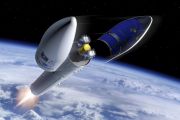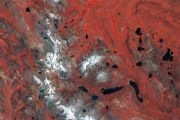
Copernical Team
New Apollo Earthrise view shows Juice’s RIME working well

When the European Space Agency’s Jupiter Icy Moons Explorer (Juice) flew past our Moon in August 2024, its Radar for Icy Moon Exploration (RIME) instrument listened to radio wave echoes to reveal the height of the lunar surface.
Space exploration should be more democratic and equitable to all potential actors
This request seems a bit unusual, so we need to confirm that you're human. Please press and hold the button until it turns completely green. Thank you for your cooperation!
Press and hold the button
If you believe this is an error, please contact our support team.
185.132.36.159 : 338b9abe-e6fa-40f7-948a-07fcbcae
Vigil: Space weather reporter launches in deep space
This request seems a bit unusual, so we need to confirm that you're human. Please press and hold the button until it turns completely green. Thank you for your cooperation!
Press and hold the button
If you believe this is an error, please contact our support team.
185.132.36.159 : 43b43abd-1186-41ae-8759-579bbaf5
ALTIUS ozone mission’s satellite platform assembled

In a spotless cleanroom, engineers at Redwire’s facilities in Belgium, have completed the assembly of a key part ESA’s ALTIUS ozone mission – the all-important satellite platform is now fully formed ready to receive its measuring instrument.
Four-legged robot’s first encounter with microgravity

For the exploration of planetary bodies with low gravity, such as the Moon or Mars, legged robots have an advantage over traditional rovers. One such robot recently jumped from wall to wall in conditions simulating partial microgravity and free flight at the European Space Agency’s Orbital Robotic Laboratory.
Largest piece of Mars on Earth fetches $5.3 million at auction, but young dinosaur steals the show
This request seems a bit unusual, so we need to confirm that you're human. Please press and hold the button until it turns completely green. Thank you for your cooperation!
Press and hold the button
If you believe this is an error, please contact our support team.
185.132.36.159 : f4cb4a9c-8bf7-4573-93e9-07ad9314
Vigil: ESA’s space weather reporter in deep space
 Video:
00:01:51
Video:
00:01:51
Space weather ‘reporter’ Vigil will be the world’s first space weather mission to be permanently positioned at Lagrange point 5, a unique vantage point that allows us to see solar activity days before it reaches Earth. ESA’s Vigil mission will be a dedicated operational space weather mission, sending data 24/7 from deep space.
Vigil’s tools as a space weather reporter at its unique location in deep space will drastically improve forecasting abilities. From there, Vigil can see ‘around the corner’ of the Sun and observe activity on the surface of the Sun days before it rotates into
Largest piece of Mars on Earth fetches meteoric $5.3 million at New York auction
This request seems a bit unusual, so we need to confirm that you're human. Please press and hold the button until it turns completely green. Thank you for your cooperation!
Press and hold the button
If you believe this is an error, please contact our support team.
185.132.36.159 : f4cb4a9c-8bf7-4573-93e9-07ad9314
Video: Earth views from Cupola during Ignis mission
This request seems a bit unusual, so we need to confirm that you're human. Please press and hold the button until it turns completely green. Thank you for your cooperation!
Press and hold the button
If you believe this is an error, please contact our support team.
185.132.36.159 : 992ba2cb-d258-41f9-9735-3679e4da
NASA's SpaceX Crew-11 mission gears up for space station research
This request seems a bit unusual, so we need to confirm that you're human. Please press and hold the button until it turns completely green. Thank you for your cooperation!
Press and hold the button
If you believe this is an error, please contact our support team.
185.132.36.159 : 39aa2fea-3029-430d-9b1a-ab44172b






























